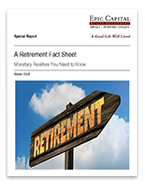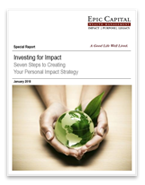Retirement Plan Options for Small Businesses
Jun 17, 2020
As a small-business owner, figuring out retirement choices can be a little intimidating. How do you pick the most appropriate retirement plan for your business as well as your employees?
There are three main types of retirement plans for small businesses: SIMPLE-IRAs, SEP-IRAs, and 401(k)s. Read on below to learn more about each type of retirement plan. Also, keep in mind that recent legislative changes that occurred with the passing of the SECURE Act and CARES Act may complicate the decision.
SIMPLE-IRAs. SIMPLE stands for Savings Incentive Match Plan for Employees. This is a traditional IRA that is set up for employees and allows both employees and employers to contribute. If you’re an employer of a small business who needs to get started with a retirement plan, a SIMPLE-IRA may be for you. While this plan doesn’t require an employee to contribute, employers must contribute 2% of their employee’s salary to a retirement fund. If you do choose to offer a matching contribution to your employee’s SIMPLE-IRA plan, you can match up to 3% of your employee’s compensation. Employees can also participate in a SIMPLE-IRA plan by having automatic deductions go straight from their paycheck to their SIMPLE-IRA.1,2,3
Distributions from SIMPLE-IRAs are taxed as ordinary income, and if taken before age 59½, may be subject to a 10% federal income tax penalty. However, during the 2020 calendar year, the CARES Act allows eligible participants to take an early distribution of up to $100,000 without paying the 10% penalty. Generally, once you reach age 72, you must begin taking required minimum distributions.
For a business to use a SIMPLE-IRA, it typically must have fewer than 100 employees and cannot have any other retirement plans in place. There are also no filing requirements required by the employer.2
SEP-IRAs. SEP plans (also known as SEP-IRAs) are Simplified Employee Pension plans. Any business of any size can set up one of these types of retirement plans, including a self-employed business owner. This type of retirement plan may be an attractive option for a business owner because a SEP-IRA does not have the start-up and operating costs of a conventional retirement plan. It also allows for a contribution of up to 25% of each employee’s pay. This is a type of retirement plan that is solely sponsored by the employer, and the contribution to each employee’s SEP-IRA must be the same amount. Employees are not able to add their own contributions. Unlike other types of retirement plans, contributions from the employer can be flexible from year to year, which can help businesses that have fluctuations in their cash flow.4
Much like SIMPLE-IRAs, SEP-IRAs are taxed as ordinary income, and if taken before age 59½, may be subject to a 10% federal income tax penalty. The CARES Act applies to SEP-IRAs too. Generally, once you reach age 72, you must begin taking required minimum distributions.
401(k)s. 401(k) plans are funded by employee contributions, and in some cases, with employer contributions as well. In most circumstances, you must begin taking required minimum distributions from your 401(k) or other defined contribution plan in the year you turn 72. Withdrawals are taxed as ordinary income, and if taken before age 59½, may be subject to a 10% federal income tax penalty. As of right now, the CARES Act exemptions apply only in the 2020 calendar year.5
Because of the recent legislative changes, resulting from the passage of the SECURE Act and the CARES Act, let’s talk further about which of these plans may work best for you and your business. A dedicated team member at Epic Capital is here to help.
Tags: Financial Planning, retirement, Retirement Planning, Tax Planning
More Insights
Key Takeaways Volatility came back with a vengeance this week as selling pressure in the mega cap space dragged down the broader market. Counterbalancing weakness in these heavyweight names poses a challenge for the rest of the market. Overbought conditions can also be blamed for the recent weakness. The S&P 500 reached a 14.9% premium … Continue reading “Market Update – Assessing the Technical Damange”
Life insurance can be an excellent tool for charitable giving. Not only does life insurance allow you to make a substantial gift to charity at relatively little cost to you, but you may also benefit from tax rules that apply to gifts of life insurance.
When you think of Social Security, you probably think of retirement. However, Social Security can also provide much-needed income to your family members when you die, making their financial lives easier. Your family members may be eligible to receive survivor benefits if you worked, paid Social Security taxes, and earned enough work credits. The number … Continue reading “Social Security Survivor Benefits”
Information vs. instinct. When it comes to investment choices, many people believe they have a “knack” for choosing good investments. But what exactly is that “knack” based on? The fact is, the choices we make with our assets can be strongly influenced by factors, many of them emotional, that we may not even be aware … Continue reading “Making Investment Choices”
As a business owner, you should carefully consider the advantages of establishing an employer-sponsored retirement plan. Generally, you’re allowed certain tax benefits for establishing an employer-sponsored retirement plan, including a tax credit for establishing the plan and a deduction for contributions you make. In return, however, you’re required to include certain employees in the plan, … Continue reading “Retirement Plans for Small Businesses”
Services
Epic Capital provides the following comprehensive financial planning and investment management services: Learn More >


 Top of Page
Top of Page











